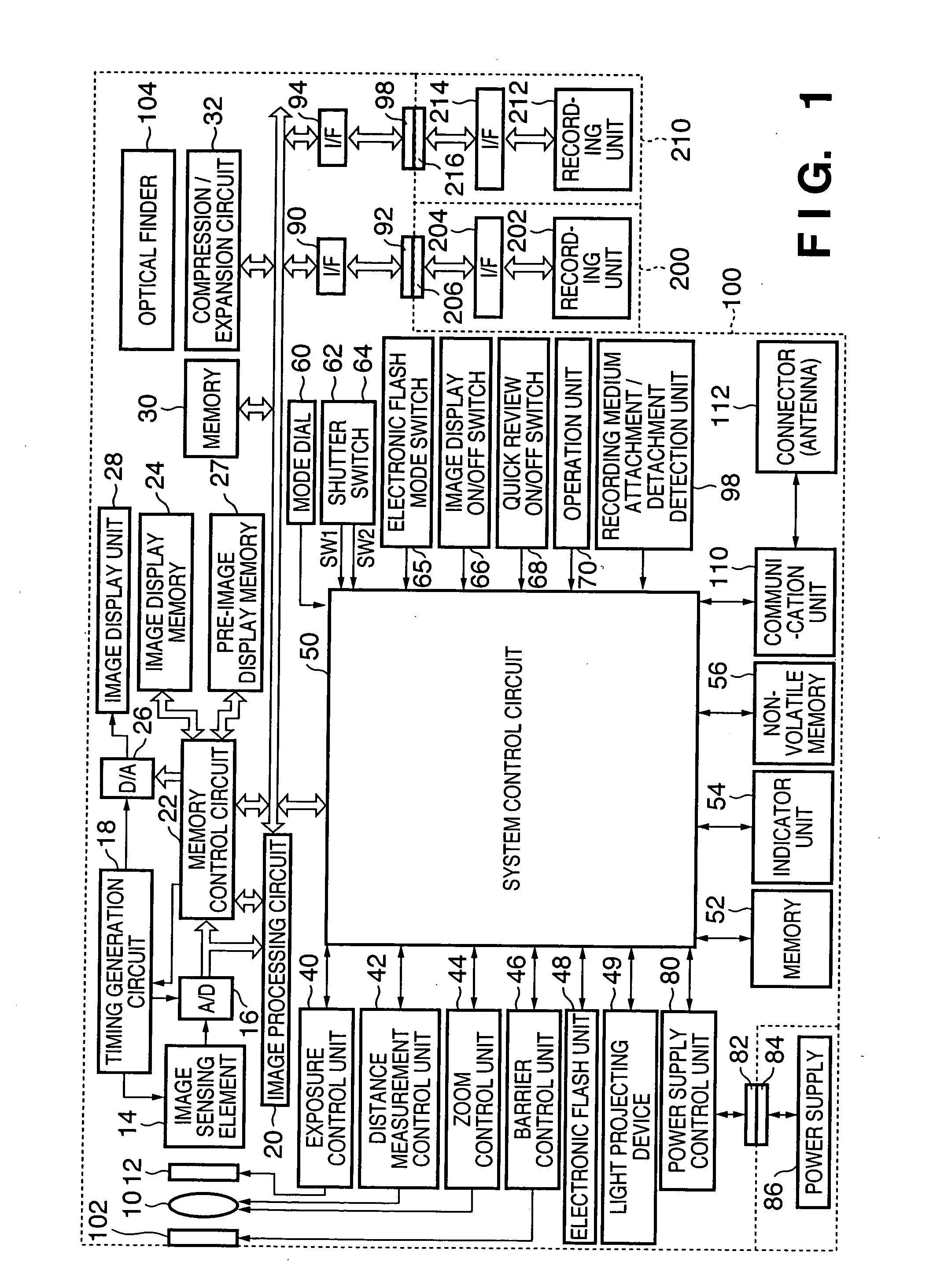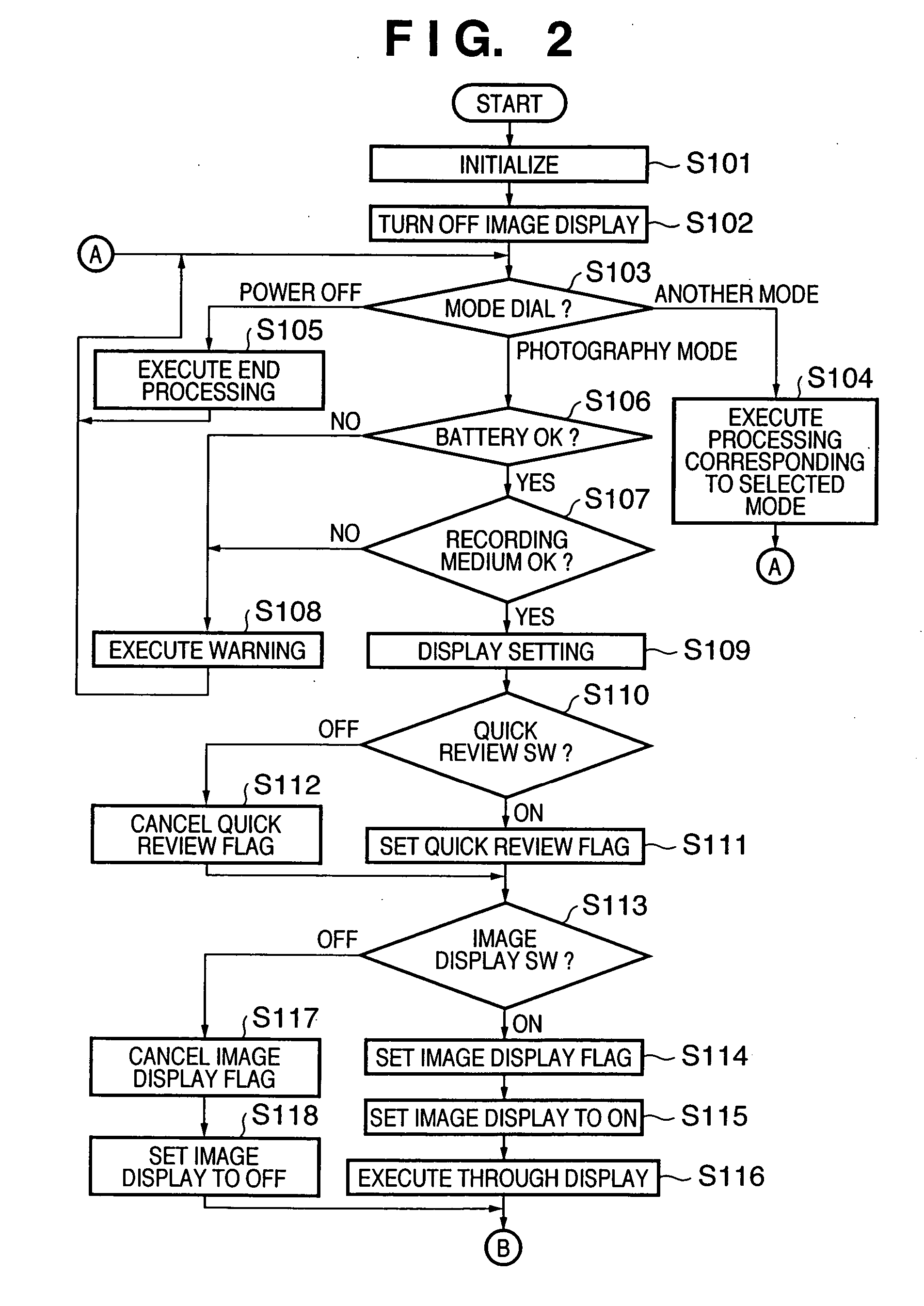Image sensing apparatus, image processing apparatus, and control method therefor
- Summary
- Abstract
- Description
- Claims
- Application Information
AI Technical Summary
Benefits of technology
Problems solved by technology
Method used
Image
Examples
second embodiment
[0186] The second embodiment of the present invention will be described next.
[0187]FIG. 13 is a block diagram of a digital camera apparatus according to the second embodiment. This arrangement is based on that shown in FIG. 1 (the arrangement of the first embodiment). Different components and characteristic features will be described below.
[0188] The arrangement of the second embodiment is different from that in FIG. 1 in that an image shift detection unit 29 is arranged. The image shift detection unit 29 detects the coordinate moving amount of an image and that of an object by photographer's camera shake from two images which continue in terms of time.
[0189]
[0190] The red-eye processing (step S123 in FIG. 3A) according to the first embodiment is executed in the order of processing operations shown in FIGS. 11A and 11B. Red-eye processing according to the second embodiment is executed in accordance with the flowcharts shown in FIGS. 12A and 12B. This will be described below with ...
third embodiment
[0211] The third embodiment will be described next. The apparatus arrangement according to the third embodiment is the same as that shown in FIG. 13. As a characteristic feature, the light emission mode in red-eye relaxation processing includes a red-eye relaxation effect priority mode (the same processing as in the first and second embodiments and will be referred to as red-eye relaxation mode 1 hereinafter) as the first mode and red-eye relaxation speed priority mode (a mode which simplifies red-eye relaxation processing and puts priority on the instruction from the shutter switch SW2 and will be referred to as red-eye relaxation mode 2 hereinafter) as the second mode. One of the two modes is selected by operating a switch provided on an operation unit 70.
[0212]
[0213] Red-eye processing (step S123 in FIG. 3A) according to the third embodiment will be described with reference to the flowcharts shown in FIGS. 15A and 15B.
[0214] A system control circuit 50 checks whether the electr...
fourth embodiment
[0231] The fourth embodiment will be described. The apparatus arrangement according to the fourth embodiment is the same as that shown in FIG. 13, and a description thereof will be omitted.
[0232] In the first to third embodiments, red-eye relaxation light projection is executed before flash photography. In the fourth embodiment, after flash photography, processing waits until a predetermined time elapses, and flash photography is executed again. The position of a red eye is detected from the comparison result between the two images.
[0233]
[0234] The processing procedures of the fourth embodiment will be described with reference to FIGS. 16 to 18A and 18B. FIGS. 16, 17A, and 17B show the main processing in the fourth embodiment. FIGS. 18A and 18B show details of photography processing in step S2132 in FIG. 16.
[0235] Referring to FIG. 16, when the apparatus is powered on by, e.g., loading a new battery, a system control circuit 50 initializes flags and control variables (step S2101)...
PUM
 Login to View More
Login to View More Abstract
Description
Claims
Application Information
 Login to View More
Login to View More - R&D
- Intellectual Property
- Life Sciences
- Materials
- Tech Scout
- Unparalleled Data Quality
- Higher Quality Content
- 60% Fewer Hallucinations
Browse by: Latest US Patents, China's latest patents, Technical Efficacy Thesaurus, Application Domain, Technology Topic, Popular Technical Reports.
© 2025 PatSnap. All rights reserved.Legal|Privacy policy|Modern Slavery Act Transparency Statement|Sitemap|About US| Contact US: help@patsnap.com



